Friday, January 29, 2010
posted by Steve Trout
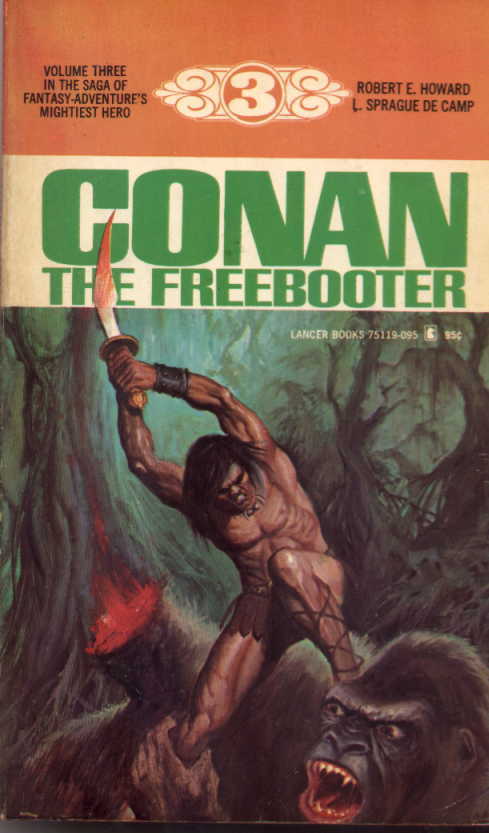
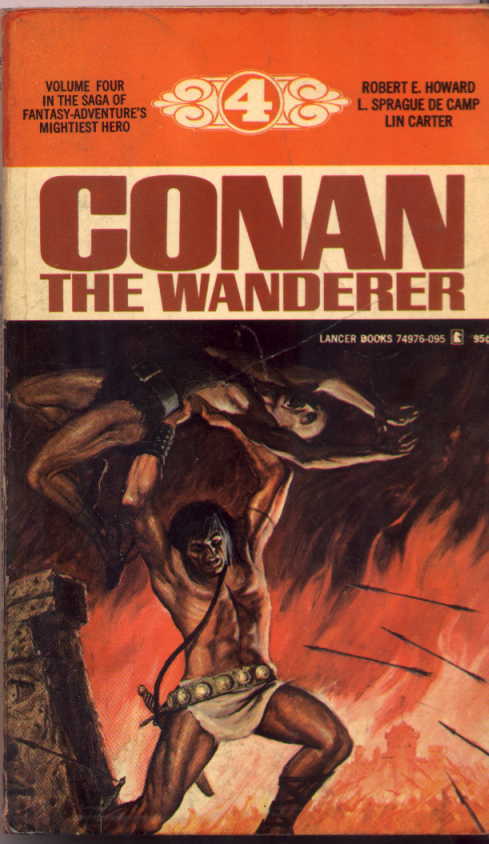
I see where in honor of Bob’s birthday people are relating their first encounter with his work. My story is, I think, unique; at least, I’ve never heard a similar one.
I was 14 and had read every Edgar Rice Burroughs story to be found, and a lot of Andre Norton as well. I went to the downtown Sears by bus, to check out their mezzanine bookstore which was the only place I knew that had those Ace paperbacks with the cool Krenkel and Frazetta covers. And my eye was caught by a crudely painted cover with a gory scene of an ape with its arm hacked off and a near-naked hairy guy who was apparently doing the hacking. Apparently Lancer had put out a new printing of the Conan series, but other people had already bought all the Frazetta ones. No matter; this, and the other Duillo-covered one, Conan the Wanderer, looked interesting enough to pick up and take home.
(Continue reading this post)
Friday, January 22, 2010
posted by Deuce Richardson
I first read the name “Robert E. Howard” in the spring of 1975. I had seen a 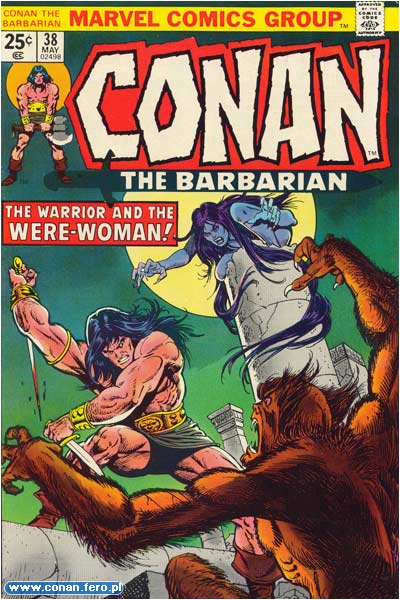 copy of Marvel’s Conan the Barbarian #38 on a spindle-rack in one of those little corner grocery stores whose place has now been taken by stores of convenience in America’s small towns. Having discovered the works of Edgar Rice Burroughs the previous year, I was primed for the sort of adventure the cover seemed to promise. My indulgent and sainted grand-mother, responding as she nearly always did to my boyish entreaties, promptly bought it for me (naked blue chick and all).
copy of Marvel’s Conan the Barbarian #38 on a spindle-rack in one of those little corner grocery stores whose place has now been taken by stores of convenience in America’s small towns. Having discovered the works of Edgar Rice Burroughs the previous year, I was primed for the sort of adventure the cover seemed to promise. My indulgent and sainted grand-mother, responding as she nearly always did to my boyish entreaties, promptly bought it for me (naked blue chick and all).
Conan #38 was Roy Thomas’ (and John Buscema’s) adaptation of Robert E. Howard’s “The House of Arabu.” Howard’s yarn featured a blonde-haired Argive named Pyrrhas as the protagonist and was set during the twilight years of Sumer. Roy, as he often did with other REH tales, “freely adapted” (his own words, right on the splash page) the yarn as a story of Conan during his time in Turan, which he entitled, “The Warrior and the Were-Woman!”. Over the years, it’s been noted more than once that “Arabu” is one of Howard’s darker tales of high adventure. In my opinion, Thomas managed to convey a lot of that while still toeing the line for the Comics Code.
(Continue reading this post)
Tuesday, October 27, 2009
posted by Deuce Richardson
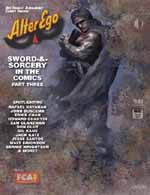
Courtesy of Bill Thom’s Coming Attractions website…
ALTER EGO #92 presents Sword-and-Sorcery in the Comics, Part 3! – Coming in March 2010! (Continue reading this post)
Wednesday, October 14, 2009
posted by Deuce Richardson
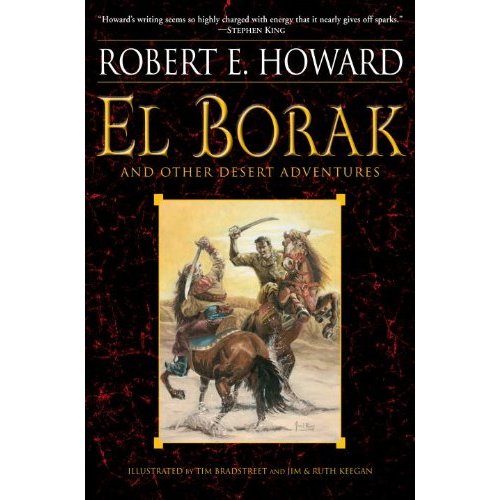
Jay Zetterberg of CPI/Paradox was kind enough to provide the REH devotees of the Official Robert E. Howard Forum with a sneak peek at the cover (see above) for the upcoming El Borak and Other Desert Adventures volume from Del Rey. Painted by the marriage-made-in-Valhalla artistic team of Jim and Ruth Keegan, the cover depicts Howard’s Francis X. Gordon engaged in a dispute with a denizen of the desert wastes. The Keegans had this to say:
“We see El Borak as an old-school, swashbuckling hero. While we try to keep the historical influences in mind — Richard Francis Burton, “Chinese” Gordon, and T. E. Lawrence, etc., we also try to imagine a never-to-be El Borak movie directed by Michael Curtiz, starring Douglas Fairbanks Sr., with a soundtrack by Erich Wolfgang Korngold. Cue the sun!”
(Continue reading this post)
Wednesday, May 27, 2009
posted by Deuce Richardson
“Before Conan, there was Kane, a Puritan swordsman on a restless search for justice.”
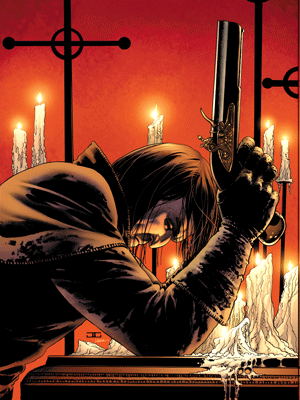
That’s the lead-in from Nick Owchar’s, “Man in black: Robert E. Howard’s Solomon Kane,” published this May 24th in his monthly column for the Los Angeles Times. Owchar, deputy book editor for the LA Times, turns in a quite respectable piece on the Man From Devonshire (and his creator). His column, “The Siren’s Call” (a title I truly dig), was a joy and revelation once I (very recently) discovered it. Dear readers, brethren, kindred and fellow travellers, Ol’ Nick is one of us. Peruse his previous columns (future blog-fodder, for me) and tell me it ain’t so. (Continue reading this post)
Thursday, January 29, 2009
posted by Steve Tompkins
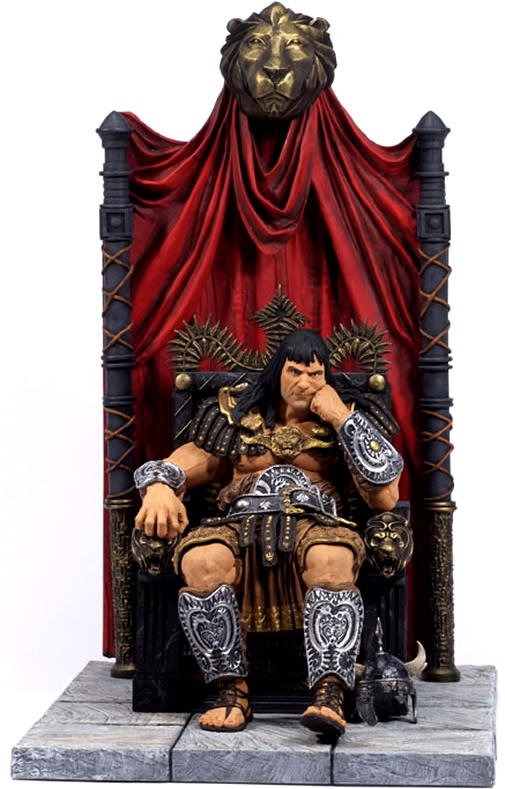
Kibbles ‘n’ bits, quibbles and snits this morning, beginning with the Dark Party Review site’s chat with Joakim Zetterberg of Paradox Entertainment. It is soon apparent that Howardian English is not Mr. Zetterberg’s first language, as he describes Conan as “strong as an oxe [sic], yet quick as a panther.” Things really fall off a Cimmerian cliff when he’s asked to debunk “the single biggest misconception” about the character:
While stuck with the epithet “Barbarian” I find him being far from it. Yes, he beats up quite a lot of people but we all know they deserve it. He has a very straight-forward moral code which is easy to understand. He does what he has to do to survive which is more or less a combination of common sense and taking matters into his own hands. He only makes a couple of moral sidesteps with today’s standards, like when he needs money for food. But barbarian, nope.
Zetterberg might merit the benefit of the doubt here –he’s presumably trying to banish the stereotype of the monosyllabic-and-Germanically-accented fur jockstrapper — but as gormless as their efforts were, even L. Sprague de Camp and Lin Carter never decoupled Conan from that conceptual be-all and end-all for REH the barbarian. “He beats up quite a lot of people” and the rest of the answer really suggest some sort of caped crusader. Please stop, or at least coach, this man before he’s interviewed again.
(Continue reading this post)
Saturday, January 24, 2009
posted by Steve Tompkins

. . .the house of life was riven asunder and the human trinity dissolved, and the worm which never dies, that which lies sleeping within us all, was made tangible and an external thing, and clothed with a garment of flesh.
Arthur Machen, The Three Impostors
Within the overall gift-that-keeps-on-giving jamboree of The Collected Letters of Robert E. Howard, for those of us who consider “Worms of the Earth” the greatest story this great writer ever told, a comment in a November 1932 letter to Tevis Clyde Smith is more precious than mithril or orichalchum: “The readers took well to my ‘Worms of the Earth’ story. I didn’t know how they’d like the copulation touch.”
I’m beyond baffled that not one of the few Howardists who had access to all-or-most of his letters has ever quoted this; we have so little on the subject of “Worms” from its author, really just the mea culpa to H. P. Lovecraft about having misspelled (or Celticized) “Eboracum” as “Ebbracum” and the well-known, Howard-as-his-own-best-critic insight that “Worms” was the only time he looked through Pictish eyes and spoke with a Pictish tongue. Much more is going on in his “copulation touch,” the night Bran Mak Morn spends with Atla the witch-woman, than Romanophobic politics making for strange bedfellows. The sex isn’t just sex; it’s transgressive sex; Howard’s hero demeans himself en route to damning himself.
(Continue reading this post)
Monday, June 23, 2008
posted by Steve Tompkins
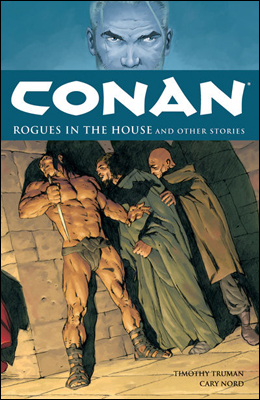
One drawback to the hardcovers in which Dark Horse collects the story-sequences of its Conan comic is that they look fatally attractive on one’s bookshelf, and therefore disincentivize the regular purchase of the monthly comic books themselves. Having belatedly caught up with Rogues in the House and Other Stories, the hardbound showcase for the talents of Timothy Truman, Cary Nord, and Tomàs Giorello, I’m feeling so sheepish as to be at risk, or even more at risk, for anthrax, to say nothing of how unable I would be to meet the disappointed gazes of Jim and Ruth Keegan. Mea culpa, mea maxima led-astray-by-laziness culpa.
The lengthy histories of Conan the Barbarian, The Savage Sword of Conan and other Howard-derived forays into the comics medium and their role in seducing and sustaining several generations of sword-and-sorcery fans deserve much more study than was devoted to the topic in Paul Sammon’s Conan the Phenomenon (In Conan: The Ultimate Guide to the World’s Most Savage Hero, Roy Thomas elected to write from “within” the Thurian/Hyborian pseudohistorical continuum as a sort of post-Nemedian scholar, rather than as the key Marvel Comics figure that he was). I find sneers about “comic book dinks” as tiresome as “fanboy” self-hatred, and I’ve always thought that Roy Thomas was a better sword-and-sorcery writer than anyone in the Seventies except Karl Edward Wagner, Charles R. Saunders, and David C. Smith; witness “Devil-Wings Over Shadizar,” “The Hour of the Griffin,” “The Garden of Death and Life,” “The Last Ballad of Laza-Lanti,” and “The Citadel at the Center of Time.”
(Continue reading this post)













